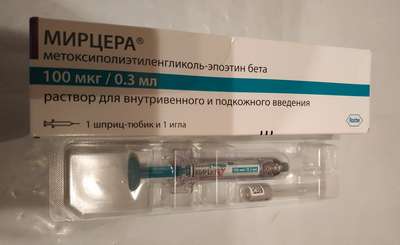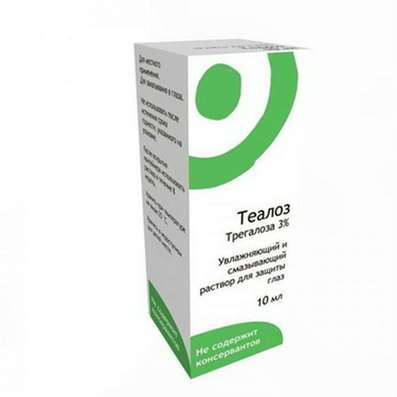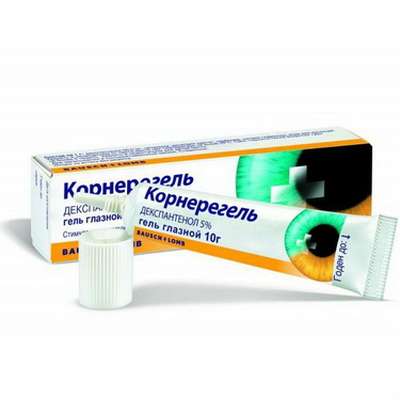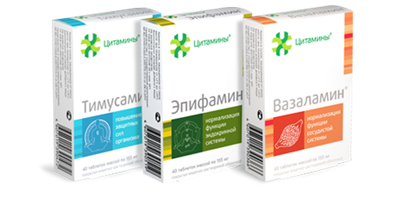Instruction for use: Solifenacin (Solifenacinum)
I want this, give me price
chemical name
1-Azabicyclo [2.2.2] oct-8-yl (1 S) -1-phenyl-3,4-dihydro-1H-isoquinoline-2-carboxylate
Pharmacological group
M Cholinolytics
The nosological classification (ICD-10)
N31 Neuromuscular dysfunction of bladder, not elsewhere classified
Overactive bladder syndrome, Idiopathic violation of detrusor function, detrusor dysfunction, Spasmodic neurogenic bladder dysfunction
N39.3 Involuntary urination
Urinary incontinence in women, Anishuriya, Urinary incontinence
R32 Urinary incontinence unspecified
daytime enuresis, Idiopathic bladder instability, Urinary incontinence, nocturia, The disorder of the bladder sphincter function, Spontaneous urination, Mixed forms of urinary incontinence, Functional disorders of micturition, Functional micturition disorders, Functional enuresis in children, Enuresis
Code CAS 242478-37-1
CharacteristicsM-cholinergic receptor antagonist. Solifenacin succinate - crystals or crystalline powder from white to pale yellow-white color. Easily soluble in water at room temperature in glacial acetic acid, dimethyl sulfoxide and methanol.
Pharmacology
Mode of action - antispasmodic, holinoliticheskoe.
It lowers the tone of smooth muscles of the urinary tract. Pharmacological studies in vitro and in vivo showed that solifenacin is a specific competitive inhibitor of m-cholinergic receptors, especially m3 subtype. It has a low affinity or does not interact with other receptors and ion channels.
The efficacy of solifenacin when used in doses of 5 and 10 mg, studied in several double-blind, randomized, controlled clinical trials in men and women with overactive bladder syndrome, manifested as early as the first week of treatment and stabilized over the next 12 weeks of treatment. The maximum effect develops within 4 weeks of treatment. Efficiency is maintained during long-term use (not less than 12 months).
Carcinogenicity, mutagenicity, effects on fertility
Not observed increased risk of cancer when administered solifenacin for 104 weeks to male and female mice at doses up to 200 mg / kg / day (5 to 9 times the exposure when taking MRDC), as well as male and female rats at doses up to 20 and 15 mg / kg / day (<1 exposure when taking MRDCH).
Revealed no mutagenic effects solifenacin in some in vitro tests, including the Ames test (Salmonella typhimurium using strains or Escherichia coli), the chromosome aberration test using human lymphocytes with / without metabolic activation and in vivo micronucleus test in rats.
No effect on the reproductive function, fertility and early embryonic development of fruit when administered to male and female mice at doses of 250 mg / kg / day (exposure 13 times higher than that of humans at the MRDCH), male rats - 50 mg / kg / day (<1 exposure MRDCH) and female rats - 100 mg / kg / day (exposure 1.7 times higher than that of humans at the MRDCH).
Pharmacokinetics
After ingestion Tmah plasma levels achieved within 3-8 hours and is independent of dose. The absolute bioavailability - about 90%. Pharmacokinetics of solifenacin is linear in the therapeutic dose range. Food intake did not significantly affect the pharmacokinetics of solifenacin.
After the on / in the volume of distribution of solifenacin is about 600 liters. The binding to plasma proteins, primarily to alpha 1-acid glycoprotein - about 98%.
Is extensively metabolized by the liver, involving mainly isoenzyme CYP3A4, however, there are alternative pathways. After ingestion plasma solifenacin addition, these metabolites have been identified: one pharmacologically active - 4R-hydroxy solifenacin and three inactive - N-glucuronide, N-oxide and 4R-hydroxy-N-oxide of solifenacin.
Solifenacin systemic clearance of about 9.5 l / h, the final T1 / 2 by multiple dose -. 45-68 h after a single administration of 10 mg of 14 C-labeled solifenacin 69.2% of the radioactivity was found in the urine and feces in 22.5% (for 26 days). Less than 15% of the radioactivity found in the urine as unchanged substance, about 18% - in the form of N-oxide metabolite, 9% - as 4R-hydroxy-N-oxide of solifenacin and 8% - as 4R-hydroxy metabolite (active metabolite) .
Pharmacokinetics in special clinical situations
Age. Studies have shown that the values of Cmax, AUC and T1 / 2 in the elderly (65 to 80) were 20-25% higher than that of younger people (55 years). In elderly people the average absorption rate, expressed as Tmax, was slightly lower, and the end T1 / 2 increased by about 20%. These differences were not clinically significant, there is no need to adjust the dose depending on the age of patients.
Pediatrics. The pharmacokinetics of solifenacin have not been studied in children and adolescents.
Gender, race. The pharmacokinetics of solifenacin are not influenced by gender or race of the patient.
Impaired renal function. In patients with mild renal insufficiency and moderate Cmax and AUC solifenacin differ slightly from those in healthy volunteers. In patients with severe renal impairment (Cl creatinine <30 ml / min) exhibit significantly higher solifenacin - Cmax increase is about 30%, AUC - 100% and more T1 / 2 - 60%. There was a statistically significant correlation between creatinine clearance and solifenacin clearance. Pharmacokinetics in patients undergoing hemodialysis, has not been studied.
Abnormal liver function. In patients with moderate hepatic insufficiency (Child-Pugh, class B) AUC increased by 35%, T1 / 2 increased by 2 times. The pharmacokinetics in patients with severe hepatic insufficiency (Child-Pugh, Class C) has not been studied.
Indications
Treatment of Urge (mandatory), urinary incontinence, frequent urination and urgent (mandatory) urination in patients with overactive bladder syndrome.
Contraindications
Hypersensitivity, acute and chronic urinary retention, severe gastrointestinal diseases (including toxic megacolon), myasthenia gravis, angle-closure glaucoma, severe liver failure, renal failure, severe or moderate hepatic impairment, while the treatment of inhibitors of CYP3A4 (eg ketoconazole), hemodialysis.
Restrictions apply
Clinically significant bladder outlet obstruction, leading to the risk of developing acute urinary retention; obstructive gastrointestinal disease, the risk of reducing GI motility, renal failure, severe (creatinine clearance <30 mL / min) and moderate hepatic impairment (dose for these patients should not exceed 5 mg), concomitant use of potent inhibitors of CYP3A4 (eg ketoconazole), hernia hiatal, gastroesophageal reflux disease, and concomitant use of drugs (such as bisphosphonates) that can cause or exacerbate esophagitis develop symptoms, autonomic neuropathy, children's age (safety and efficacy in children has not been established). Patients with rare hereditary disorders of galactose tolerance, Lapp lactase deficiency (Sami), glucose-galactose malabsorption should not take the drug.
Pregnancy and breast-feeding
Experimental studies in animals (mice, rats, rabbits) showed that solifenacin passes through the placental barrier in mice. When administered to mice at doses of solifenacin 30 mg / kg / day (1.2 MRDCH exposure) were observed embryotoxicity and teratogenic effects. Introduction to pregnant mice with doses of 100 mg / kg / day and above (3.6 times higher than the exposure MRDCH) during fetal development agencies and lactation resulted in weight loss of fruits, reduced postnatal survival, delayed physical development (including. eye opening hours).; dosing of 250 mg / kg / day and higher (7.9-fold higher exposure MRDC) led to increased incidence of cleft palate. There were no embryotoxicity solifenacin in rats at doses up to 50 / mg / kg / day (<1 MRDC exposure) and in rabbits at doses up to 50 / mg / kg / day (1.8 times higher exposure MRDC).
It should be used with caution during pregnancy (adequate and well-controlled studies have been conducted).
Category effects on the fetus by FDA - C.
It is not recommended during breast-feeding (breast milk gets into mice, the data on the penetration of breast milk in humans are not available).
Side effects
The most likely side-effects associated with anticholinergic solifenacin - dry mouth, constipation, blurred vision (disturbance of accommodation), urinary retention, dry eyes. Adverse effects are more likely mild or moderate severity, frequency of dose-dependent. In the four 12-week, double-blind clinical trials, it was observed 3 cases of severe intestinal side effects in patients receiving the drug at a dose of 10 mg: ileus, intestinal obstruction (blockage of the intestine), coprostasia. The overall incidence of serious adverse events was 2% in double-blind trials. Angioedema was reported in one patient at 5 mg background. The frequency and severity of side effects were similar in patients who received 12 weeks of therapy and in patients who were treated up to 12 months. The most frequent reason for discontinuation of solifenacin was dry mouth (1.5%).
The table shows the side effects, regardless of their causes, registered in the randomized placebo-controlled clinical trials in patients treated with solifenacin daily dose of 5 mg or 10 mg for 12 weeks (given the effects of having a frequency ≥1% and greater than frequency placebo).
Table
The side effects observed in clinical trials of solifenacin
| Systems | organism Placebo (%) | of solifenacin 5 mg (%) | of solifenacin 10 mg (%) |
| Number of Patients | 1216 | 578 | 1233 |
| Number of patients with treatment side effects caused | 634 | 265 | 773 |
| Gastrointestinal Disorders | |||
| Dry mouth | 4.2 | 10.9 | 27.6 |
| Constipation | 2.9 | 5.4 | 13.4 |
| Nausea | 2.0 | 1.7 | 3.3 |
| Dyspepsia | 1.0 | 1.4 | 3.9 |
| Abdominal pain | 1.0 | 1.9 | 1.2 |
| Vomiting | 0.9 | 0.2 | 1.1 |
| infection | |||
| Urinary tract infection | 2.8 | 2.8 | 4.8 |
| Influenza | 1.3 | 2.2 | 0.9 |
| Pharyngitis | 1.0 | 0.3 | 1.1 |
| Disorders of the nervous system and sensory organs | |||
| Dizziness | 1.8 | 1.9 | 1.8 |
| Depression | 0.8 | 1.2 | 0.8 |
| Blurred vision | 1.8 | 3.8 | 4.8 |
| Dry eye | 0.6 | 0.3 | 1.6 |
| Disorders of the urinary system | |||
| urinary retention | 0.6 | 0 | 1.4 |
| other | |||
| Swelling of the lower extremities | 0.7 | 0.3 | 1.1 |
| Fatigue | 1.1 | 1.0 | 2.1 |
| Cough | 0.2 | 0.2 | 1.1 |
| Hypertension | 0.6 | 1.4 | 0.5 |
In post-marketing studies, the following side effects associated with taking solifenacin have been reported:
General: Hypersensitivity reactions, including angioedema, rash, pruritus, urticaria.
CNS: confusion, hallucinations.
Interaction
With concomitant treatment drugs with anticholinergic properties may increase therapeutic effect and adverse events (after discontinuation of solifenacin should take a break 1 week prior to treatment other anticholinergic drugs). The therapeutic effect may be reduced by simultaneous administration of cholinergic receptor agonists. Solifenacin can reduce the effect of drugs that stimulate the motility of the gastrointestinal tract, such as metoclopramide and cisapride. Studies in vitro indicated that solifenacin in the therapeutic concentrations did not inhibit isozymes of human liver CYP1A1 / 2, CYP2C9, CYP2C19, CYP2D6, CYP3A4. When applied simultaneously with ketoconazole at a dose of 200 mg / day (an inhibitor of CYP3A4) was an increase in AUC of solifenacin 2 times in a dose of 400 mg / cut - 3 times; the maximum dose of solifenacin should not exceed 5 mg if the patient simultaneously receives ketoconazole or therapeutic doses of other CYP3A4 inhibitors (such as ritonavir, nelfinavir, itraconazole). Co-administration of solifenacin and CYP3A4 inhibitor is contraindicated in patients with severe renal impairment or moderate hepatic impairment. Since solifenacin metabolized by CYP3A4, pharmacokinetic interactions are possible with other CYP3A4 substrates with higher affinity (verapamil, diltiazem) and CYP3A4 inducers (rifampicin, phenytoin, carbamazepine). There were no pharmacokinetic interaction of solifenacin and combined oral contraceptives (ethinyl estradiol / levonorgestrel). Simultaneous treatment of solifenacin did not cause changes in the pharmacokinetics of R-warfarin and S-warfarin or their effect on the PT. Simultaneous treatment of solifenacin had no effect on the pharmacokinetics of digoxin.
Overdose
Symptoms (while taking solifenacin volunteers at a dose of 100 mg single dose): headache, dry mouth, dizziness, drowsiness, blurred vision. No cases of acute overdose have been reported.
Treatment: to assign activated charcoal, gastric lavage, but do not induce vomiting. If necessary spend symptomatic therapy: in severe central anticholinergic effects (hallucinations, irritability) - physostigmine or carbachol; in convulsions or excited expression - benzodiazepines; respiratory failure - ventilation; tachycardia - beta-blockers; in acute urinary retention - bladder catheterization; with mydriasis - instillation of pilocarpine in the eye and / or the patient's room into a dark room.
As with other anticholinergic drugs overdose, special attention should be given to patients with a QT interval prolongation risk (ie, hypokalemia, bradycardia, and while taking drugs that cause QT prolongation) and in patients with diseases of the cardiovascular system (ischemia infarction, arrhythmia, congestive heart failure).
Routes of administration
Inside.
Precautions
Before treatment should exclude other causes urination disorders. In case of urinary tract infections should start appropriate antibiotic therapy.
Solifenacin, like other anticholinergics, can cause blurred vision and drowsiness and fatigue, therefore caution should be exercised when driving and operating machinery.

 Cart
Cart





